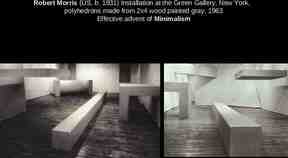Chapter 19 Designing Accurate Data-Entry Procedures Systems
47 Slides144.50 KB
Chapter 19 Designing Accurate Data-Entry Procedures Systems Analysis and Design Kendall and Kendall Fifth Edition
Major Topics Data entry Effective coding Types of codes Guidelines for coding Validation methods Check digits Ecommerce accuracy Kendall & Kendall Copyright 2002 by Prentice Hall, Inc. 19-2
Quality Data-Entry Objectives The quality of data input determines the quality of information output Accurate data entry is achieved through four broad objectives: Effective coding Effective data capture Efficient data capture and entry Assuring quality through validation Kendall & Kendall Copyright 2002 by Prentice Hall, Inc. 19-3
Codes and Coding Coding helps efficiency because Data that are coded require less time to enter Coding helps to reduce the number of items entered Coding can help in sorting of data during the data transformation process Coded data can save valuable memory/storage space Kendall & Kendall Copyright 2002 by Prentice Hall, Inc. 19-4
Purpose of Coding Besides providing accuracy and efficiency, coding does the following: Keeping track of something Classifying information Concealing information Revealing information Requesting appropriate action Kendall & Kendall Copyright 2002 by Prentice Hall, Inc. 19-5
Types of Codes Types of codes are Simple sequence code Alphabetic derivation codes Classification codes Block sequence codes Cipher codes Significant digit subsets Mnemonic codes Function codes Kendall & Kendall Copyright 2002 by Prentice Hall, Inc. 19-6
Simple Sequence Code Identify a person, place, or thing in order to keep track of it A number that is assigned to something if it needs to be numbered Order Product It hasNumber no relation to the data itself 5676 Rocking Chair 5677 Dining Room Table 5678 Love Seat Kendall & Kendall Copyright 2002 by Prentice Hall, Inc. 19-7
Alphabetic Derivation Codes A commonly used approach in identifying an account number The code becomes the account number Kendall & Kendall Copyright 2002 by Prentice Hall, Inc. 19-8
Alphabetic Derivation Codes First five digits come from the first five digits of the subscriber's zip code Next three are the first three consonants in the subscriber's name Next four numbers are the street address Last three make up the code for the magazine Code 68506KND7533TVG Kendall & Kendall Format of Code 99999XXX9999XXX Copyright 2002 by Prentice Hall, Inc. 19-9
Advantages of Alphabetic Derivation Codes Advantages Can have zip code in front for sorting A requirement for bulk mailing A magazine subscription may be used weekly for mailing Can verify a person calling about their account Kendall & Kendall Copyright 2002 by Prentice Hall, Inc. 19-10
Disadvantages of Alphabetic Derivation Codes Disadvantages Names like ROE - become RXX Street addresses like 12 OAK STREET - code contains 1200 Changing name or address results in the key field being changed Kendall & Kendall Copyright 2002 by Prentice Hall, Inc. 19-11
Classification Information Coding affords the ability to distinguish between classes of items Classes must be mutually exclusive Classification Codes Used to distinguish one group of data with special characteristics from another Kendall & Kendall Copyright 2002 by Prentice Hall, Inc. 19-12
Classification Information Consist of either a single letter or a number A shorthand way of describing a person, place, thing, or happening Classification codes are listed in manuals or posted so that users can locate them easily Kendall & Kendall Copyright 2002 by Prentice Hall, Inc. 19-13
Classification Codes Use a single letter for a code Code I M T C D S Kendall & Kendall Tax Deductible Item Interest Payments Medical Payments Taxes Contributions Dues Supplies Copyright 2002 by Prentice Hall, Inc. 19-14
Classification Codes Problems Code I M T C D S B P N X Kendall & Kendall Tax Deductible Item Interest Payments Medical Payments Taxes Contributions Dues Supplies Subscriptions Computer Insurance Miscellaneous Copyright 2002 by Prentice Hall, Inc. 19-15
Block Sequence Codes An extension of the sequence code Advantages That the data are grouped according to common characteristics The simplicity of assigning the next available number (within the block) to the next item needing identification Can do inquiries on code beginnings Kendall & Kendall Copyright 2002 by Prentice Hall, Inc. 19-16
Block Sequence Code Code 100 101 102 200 201 202 300 301 400 401 Name of Software Package Netscape Internet Explorer Lynx Access Paradox Oracle Word WordPerfect Astound Micrograf Designer Kendall & Kendall Type Browser Database Word Processing Presentation Copyright 2002 by Prentice Hall, Inc. 19-17
Cipher Codes Codes may be used to conceal or disguise information Cipher Codes Direct substitution of one letter for another, one number for another, or one letter for a number Kendall & Kendall Copyright 2002 by Prentice Hall, Inc. 19-18
Cipher Codes Code Meaning B 1 Style Code L 2 E 3 GOLDEN’S A 4 202-395-40 C 5 BIMC H 6 M 7 Size 12 I 8 25.00 N 9 D 0 Kendall & Kendall Copyright 2002 by Prentice Hall, Inc. 19-19
Revealing Information Sometimes it is desirable to reveal information through a code Make the data entry more meaningful Allows persons to view the code and understand what it means Kendall & Kendall Copyright 2002 by Prentice Hall, Inc. 19-20
Significant Digit Subsets Used to describe a product via its membership in many subgroups The advantage of using a significant-digit subset code is the ability to locate items that belong to a certain group or class Kendall & Kendall Copyright 2002 by Prentice Hall, Inc. 19-21
Significant Digit Subsets Can do inquiries on portions of the code Look for matching red items, other size 10 items, other maternity, or similar Code Merchandise Described dresses Red maternity dress, style 395, size 10 2023954010 202 395 40 10 Department (maternity) Product (dress style 395) Color (red) Size (size 10) Kendall & Kendall Copyright 2002 by Prentice Hall, Inc. 19-22
Mnemonic Codes A mnemonic (pronounced nî-môn'-ïk) is a memory aid Any code that helps data-entry person remember how to enter the data or End user remember how to use the information Uses a combination of letters and symbols Kendall & Kendall Copyright 2002 by Prentice Hall, Inc. 19-23
Function Codes Codes are often necessary for instructing either the computer or the person about actions to take Function Codes Spelling out precisely what activities are to be accomplished is replaced by the use of a short numerical or alphabetic code Kendall & Kendall Copyright 2002 by Prentice Hall, Inc. 19-24
Guidelines for Coding Guidelines for coding Keep codes concise Keep codes stable Make codes that are unique Allow codes to be sortable Avoid confusing codes Keep codes uniform Allow for modification of codes Make codes meaningful Kendall & Kendall Copyright 2002 by Prentice Hall, Inc. 19-25
Keep Codes Concise Overly long codes mean more keystrokes and consequently more errors Long codes also mean the information in the files will require more memory If codes must be long, they should be broken up into subcodes Kendall & Kendall Copyright 2002 by Prentice Hall, Inc. 19-26
Keep Codes Stable Stability means that the identification code for a customer should not change each time new data are received Kendall & Kendall Copyright 2002 by Prentice Hall, Inc. 19-27
Make Codes That are Unique Assure that codes are unique Make a note of all codes used in the system Do not assign the same code number or name to the same items Kendall & Kendall Copyright 2002 by Prentice Hall, Inc. 19-28
Allow Codes to be Sortable The codes must be sortable Problem date: MMMDDYY First three symbols are the month as a three-letter abbreviation Second two are the date as a number Last two digits are the year Numerical codes are much easier to sort than alpha-numeric data Kendall & Kendall Copyright 2002 by Prentice Hall, Inc. 19-29
Avoid Confusing Codes Avoid using coding characters that look or sound alike O (the letter oh) and 0 (the number zero) Letter I and the number 1 Letter Z and the number 2 Codes such as B1C and 280Z are confusing Canadian Postal Code The code format is X9X 9X9 Kendall & Kendall Copyright 2002 by Prentice Hall, Inc. 19-30
Keep Codes Uniform Follow readily perceived forms most of the time Avoid using the codes MMDDYY in one application YYDDMM in a second MMDDCCYY in a third; CC - century Kendall & Kendall Copyright 2002 by Prentice Hall, Inc. 19-31
Allow for Modification of Codes The system will evolve over time The coding system should be able to encompass change Kendall & Kendall Copyright 2002 by Prentice Hall, Inc. 19-32
Make Codes Meaningful Effective codes contain information They should make sense to people using them Meaningful codes are easier to understand, work with, and recall Kendall & Kendall Copyright 2002 by Prentice Hall, Inc. 19-33
Using Codes Codes are used In validation programs to ensure that only valid codes have been entered In report and inquiry programs to display code meanings In GUI programs to create drop-down lists This helps to ensure accurate data, since the user sees the code and it’s meaning and can only select a code from the list Kendall & Kendall Copyright 2002 by Prentice Hall, Inc. 19-34
Effective Data Capture In order to assure the quality of data entered into the system, it is important to capture data effectively Kendall & Kendall Copyright 2002 by Prentice Hall, Inc. 19-35
Guidelines for Effective Data Capture Guidelines for effective and efficient data capture Deciding what to capture Letting the computer do the rest Avoiding bottlenecks and extra steps Starting with a good form Choosing a data-entry method Kendall & Kendall Copyright 2002 by Prentice Hall, Inc. 19-36
Validation Overview To assure data quality, errors should be detected during input, prior to processing and storage Two possible ways to validate inputs are: Validation of input transactions Validation of input data Kendall & Kendall Copyright 2002 by Prentice Hall, Inc. 19-37
Data-Entry Methods Data-entry methods include Keyboards Optical character recognition Magnetic ink character recognition Mark-sense forms Bar codes Intelligent terminals Kendall & Kendall Copyright 2002 by Prentice Hall, Inc. 19-38
Problems With Input Data Three main problems that can occur with input transactions are Submitting the wrong data to the system Submitting of data by an unauthorized person Asking the system to perform an unacceptable function Kendall & Kendall Copyright 2002 by Prentice Hall, Inc. 19-39
Validation Methods Validation methods include Test for missing data Test for correct field length Test for class or composition Test for range or reasonableness Test for invalid values Cross-reference checks Test for comparison with stored data Kendall & Kendall Copyright 2002 by Prentice Hall, Inc. 19-40
Check Digits Check digits are used to validate a numeric field by performing a calculation on a part of the number and comparing the result with a digit stored within the number Check digits help to detect Single digit miskey Transposition errors Kendall & Kendall Copyright 2002 by Prentice Hall, Inc. 19-41
Check Digits There are several check digit methods: Modulus Modulus Modulus Modulus Kendall & Kendall 10, 10, 11, 11, “2-1-2” method “3-1-3” method arithmetic method geometric method Copyright 2002 by Prentice Hall, Inc. 19-42
Check Digit General Method Start with the numeric code Choose the weighting method and modulus number Multiply the digit by the chosen weight Sum the new numbers Divide by the modulus number Kendall & Kendall Copyright 2002 by Prentice Hall, Inc. 19-43
Check Digit General Method Remaining Steps Compute the check digit by taking the modulus number and subtracting the remainder Subtract again if greater than 10 Add check digit to the end of the number Use this new code for data entry and let the computer validate the code Kendall & Kendall Copyright 2002 by Prentice Hall, Inc. 19-44
Modulus 11 Arithmetic Method Number 2 9 6 4 5 Weights 6 5 4 3 2 Product 12 45 24 12 10 Original number 29645 Sum of products 103 Divide 103/11 9 remainder 4 Checkdigit 11- 4 7 Final number 296457 9R4 11 103 -99 4 Kendall & Kendall 11 - 4 7 Copyright 2002 by Prentice Hall, Inc. 19-45
Using Codes Codes may be included in dropdown lists when using a GUI interface This helps to ensure that the data entered are accurate, since the user sees both the code and it’s meaning and can only select a code from the list Kendall & Kendall Copyright 2002 by Prentice Hall, Inc. 19-46
Ecommerce Accuracy Ecommerce environments have increased accuracy of data because Customers generally enter data themselves Data entered by customers are stored for later use Data entered at the point of sale are used throughout the order fulfillment process Information is used as feedback to customers Kendall & Kendall Copyright 2002 by Prentice Hall, Inc. 19-47




















































